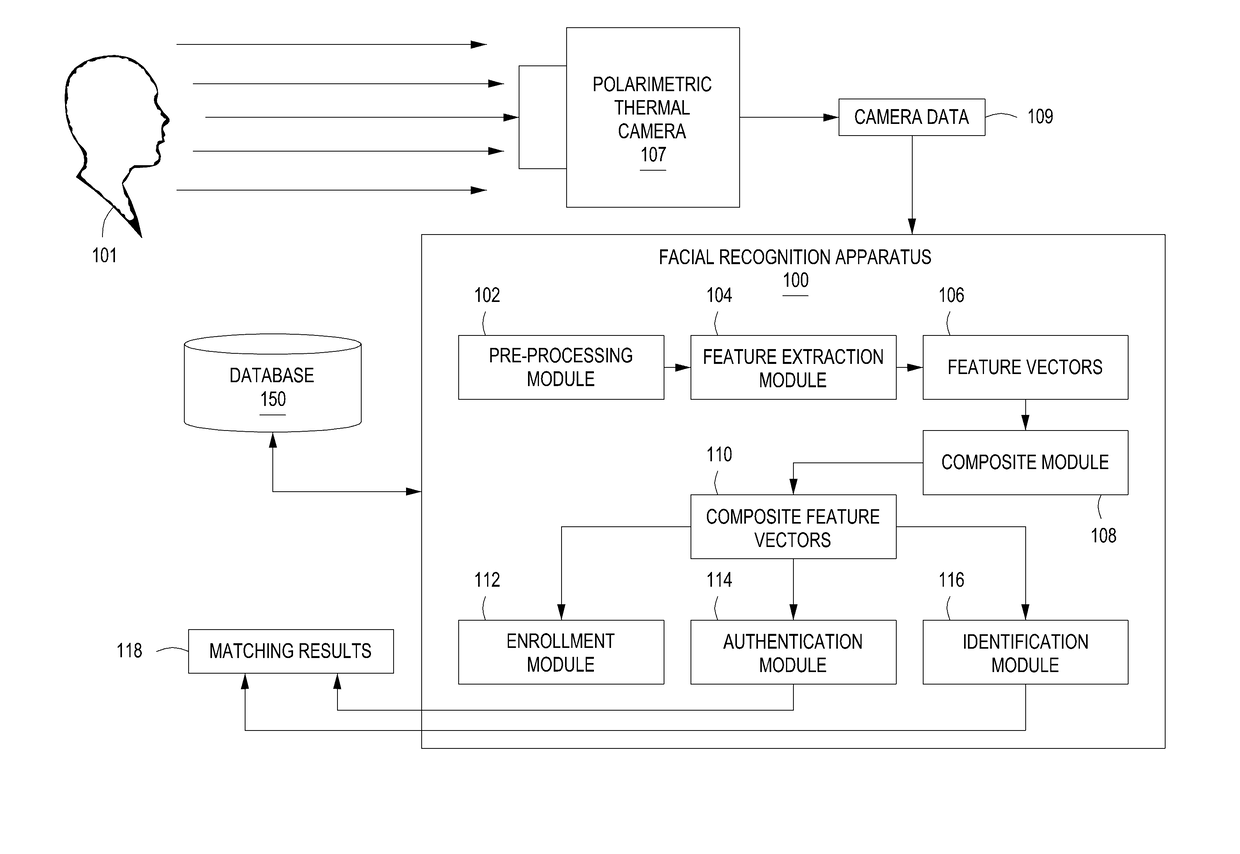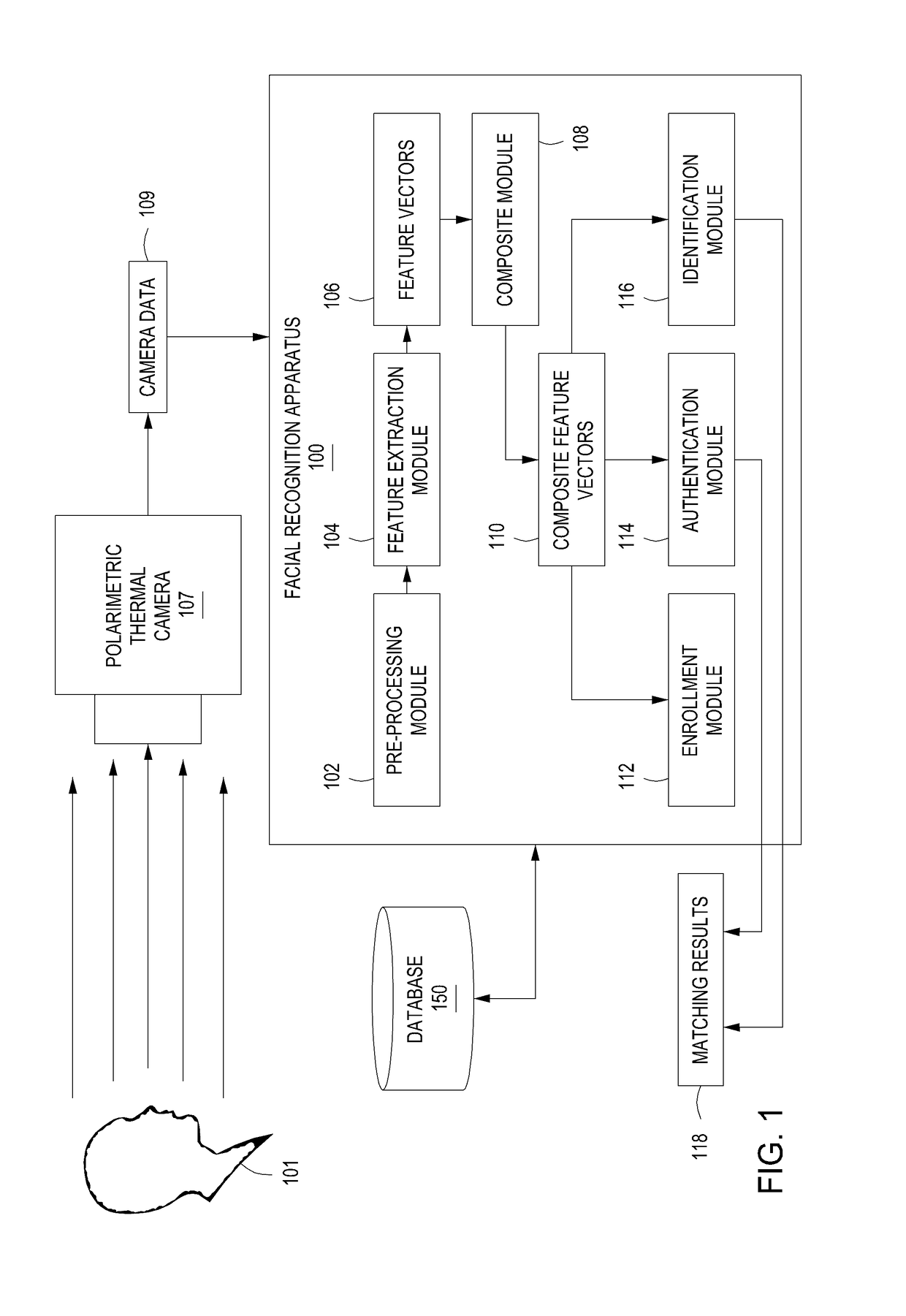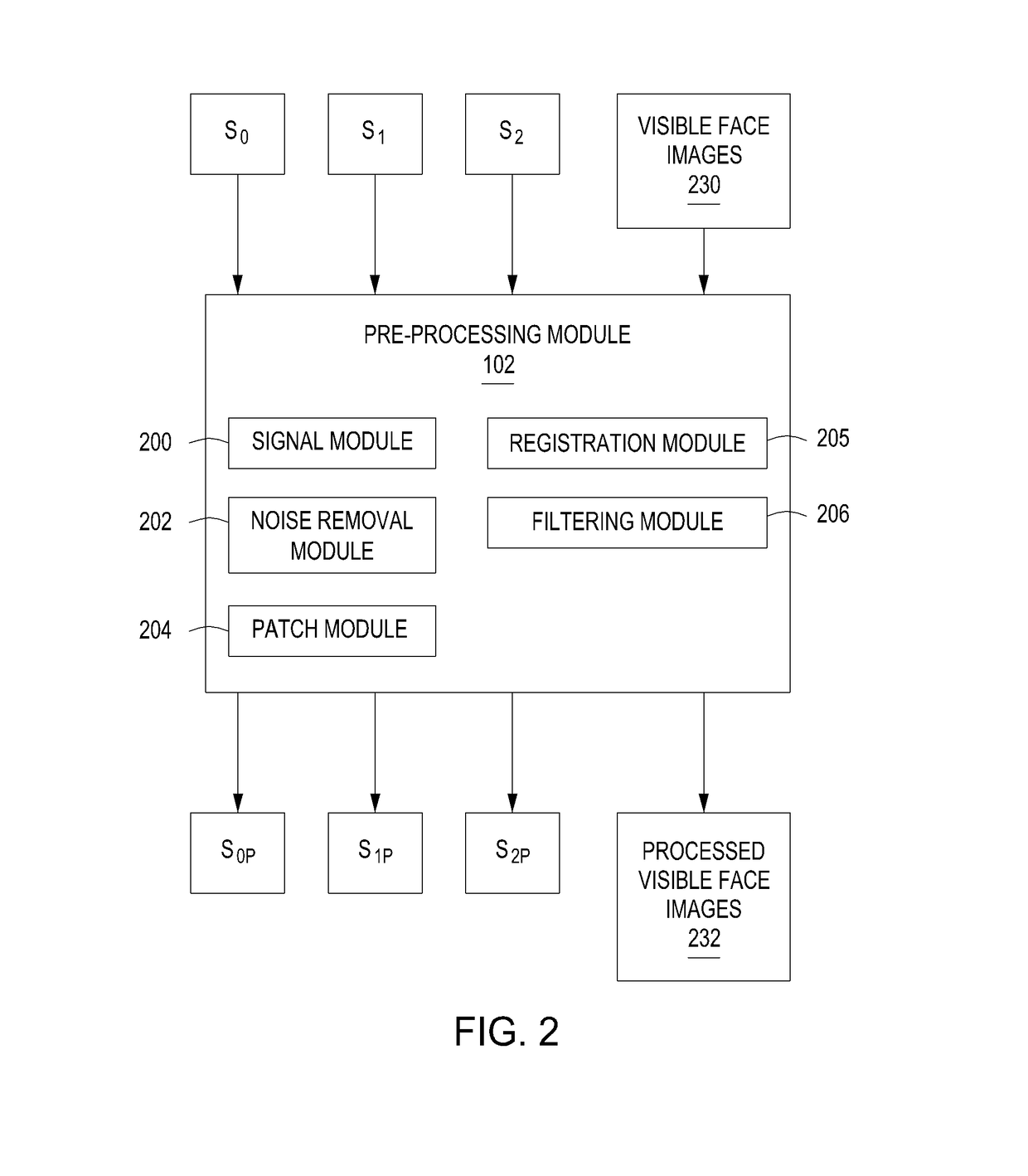Method of apparatus for cross-modal face matching using polarimetric image data
a technology of polarimetric image data and cross-modal face matching, which is applied in the direction of optical radiation measurement, instruments, sensing radiation from moving bodies, etc., can solve the problems of preventing cameras operating in the visible light spectrum from being used discreetly and effectively, unable to match an unknown thermal probe image of an individual's face to a set of known visible gallery images, and unable to achieve classification. methods with limited success
- Summary
- Abstract
- Description
- Claims
- Application Information
AI Technical Summary
Benefits of technology
Problems solved by technology
Method used
Image
Examples
Embodiment Construction
[0023]Embodiments of the present invention are directed to a method and apparatus for cross-modal face matching using polarimetric image data. Polarimetric imaging in the thermal spectrum is sensitive to changes in surface texture and geometry. The polarization-state of radiation emission (i.e., polarimetric image data) provides geometric and texture information about the surface of the imaged face, for example, prominent facial features of a person's face. For cross-modal recognition, the combination of polarimetric face features with conventional thermal face features provides a stronger correlation with the visible light feature representation and leads to better matching results than conventional thermal alone. For within-modal / spectrum matching, the polarization-state information provides fine details of the face that improve the discriminability over conventional thermal face images.
[0024]For example, in some embodiments, image data of a face is captured by a thermal camera an...
PUM
 Login to View More
Login to View More Abstract
Description
Claims
Application Information
 Login to View More
Login to View More - R&D
- Intellectual Property
- Life Sciences
- Materials
- Tech Scout
- Unparalleled Data Quality
- Higher Quality Content
- 60% Fewer Hallucinations
Browse by: Latest US Patents, China's latest patents, Technical Efficacy Thesaurus, Application Domain, Technology Topic, Popular Technical Reports.
© 2025 PatSnap. All rights reserved.Legal|Privacy policy|Modern Slavery Act Transparency Statement|Sitemap|About US| Contact US: help@patsnap.com



